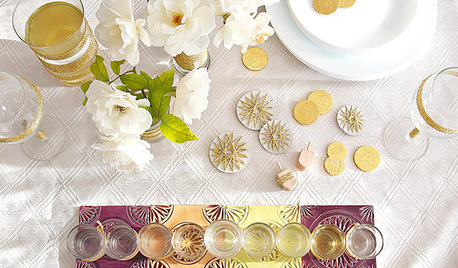tung oil 'finish' may not have tung oil
terible
16 years ago
Related Stories

GARDENING AND LANDSCAPINGWhat to Know Before You Buy Teak Outdoor Furniture
Learn about finishes, weathering, care and that age-old oil debate to get the teak furnishings that suit you best
Full Story
GARDENING AND LANDSCAPING11 Garden Retreats for the Creatively Inclined
Finally finish that novel, opera or oil painting you’ve been working on by drawing inspiration from these peaceful retreats
Full Story
FLOORS11 Distinctive Finishes for Original Floorboards
Whether you go for glossy, painted or matte boards, make your wood floor the star
Full Story
PETS5 Finishes Pets and Kids Can’t Destroy — and 5 to Avoid
Save your sanity and your decorating budget by choosing materials and surfaces that can stand up to abuse
Full Story
WOODDesign Workshop: Plywood as Finish
Trendproof your interior with this sensible guide to using this utilitarian material indoors
Full Story
WALL TREATMENTSPick the Right Paint Finish to Fit Your Style
The question of finish may be as crucial as color. See which of these 9 varieties suits your space — and budget
Full Story
REMODELING GUIDES10 Features That May Be Missing From Your Plan
Pay attention to the details on these items to get exactly what you want while staying within budget
Full Story
KITCHEN DESIGNA Single-Wall Kitchen May Be the Single Best Choice
Are your kitchen walls just getting in the way? See how these one-wall kitchens boost efficiency, share light and look amazing
Full Story
HOUSEKEEPINGTo-Dos: Your May Home Checklist
Dig out that touch-up paint and rotate that mattress in preparation for the lazy days of summer
Full Story
HOLIDAYSDIY: Shiny Gold Accents to Make Your Hanukkah Table Glow
Wrap glass vessels with metallic yarn and fill them with oil and wicks for a festive and bright holiday look
Full StorySponsored
Central Ohio's Trusted Home Remodeler Specializing in Kitchens & Baths
More Discussions










chiefneil
mondragon
Related Professionals
Flint Kitchen & Bathroom Designers · Greensboro Kitchen & Bathroom Designers · Hybla Valley Kitchen & Bathroom Designers · King of Prussia Kitchen & Bathroom Designers · Piedmont Kitchen & Bathroom Designers · Covington Kitchen & Bathroom Designers · Boca Raton Kitchen & Bathroom Remodelers · Eureka Kitchen & Bathroom Remodelers · Idaho Falls Kitchen & Bathroom Remodelers · Payson Kitchen & Bathroom Remodelers · Weston Kitchen & Bathroom Remodelers · Bullhead City Cabinets & Cabinetry · Ham Lake Cabinets & Cabinetry · Tinton Falls Cabinets & Cabinetry · Brookline Tile and Stone Contractorsmindstorm
chiefneil
teribleOriginal Author
mindstorm
mondragon
antss
Heritage Restoration,